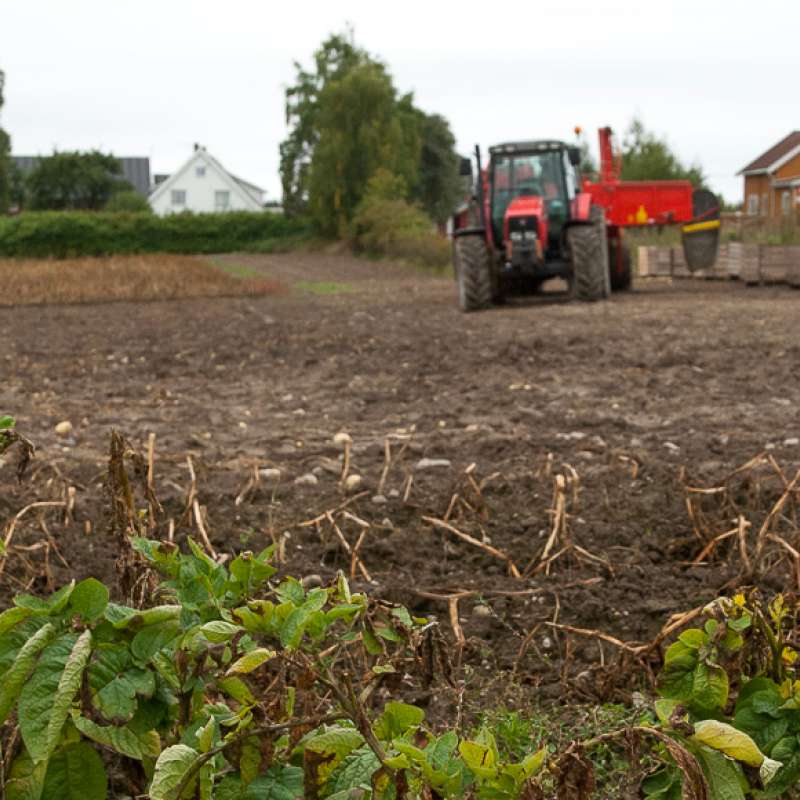Kirsten Tørresen
Forsker
Forfattere
Kirsten Tørresen John Ingar Øverland Bjørn Inge Rostad Else Villadsen Ingvild Evju Nils Kristian Aker Nils BjugstadSammendrag
Det er ikke registrert sammendrag
Sammendrag
I denne rapporten presenteres resultater fra biologisk veiledningsprøving av ugrasmidler mot ugras i potet på friland, i gulrot under plast og på friland og i pastinakk. I tillegg er VIPS-Ugras i vårkorn testet.
Forfattere
Kirsten Tørresen Marit Helgheim Vegard Hjerpaasen Cornelis Arnoldussen Lars Olav BrandsæterSammendrag
Det er ikke registrert sammendrag

Divisjon for bioteknologi og plantehelse
SOLUTIONS: New solutions for potato canopy desiccation, control of weeds and runners in field strawberries & weed control in apple orchards
Efficient measures for weed control and similar challenges are vital to avoid crop loss in agriculture. National supply of food, feed and other agricultural products depends on each farmer’s success managing their fields and orchards. The recent loss of the herbicide diquat, and the potential ban on glyphosate, - both important tools for farmers -, raise a demand for new measures for vegetation control. Efficient alternatives to herbicides are also important tools in Integrated Pest Management (IPM). Norwegian growers need to document compliance to IPM since 2015 to ensure minimum hazards to health and environment from pesticide use.

Divisjon for bioteknologi og plantehelse
Weeds vs. Crops: the winner of climate change
This project investigates the effects of climate change on competition between weeds and crops and will provide essential knowledge for developing adaptation strategies in the face of a changing climate.

Divisjon for bioteknologi og plantehelse
AGROSOIL - Agroøkologisk jordoptimalisering for integrert ugrasbekjempelse

Weeds vs. Crops: the winner of climate change

Divisjon for bioteknologi og plantehelse
Ugras eller kulturplanter -vinneren av klimaendringene
Dette prosjekt undersøker effektene av klimaendring på konkurranse mellom ugras- og kulturplanter og vil gi oss viktig kunnskap for å kunne utvikle tilpassede strategier i møte med et klima i endring.

Divisjon for bioteknologi og plantehelse
SUSWECO - Bærekraftig ugrasbekjempelse i korn ved å kombinere fangvekster og redskap med minimal jordarbeiding
Det er behov for mer bærekraftige driftsformer som gir gode avlinger og lite økologisk fotavtrykk. To viktige aspekt for dette i kornproduksjonen er (i) bruken av fangvekster bl.a. for å minske erosjon og utvasking, og (ii) nye metoder for ugraskontroll med minst mulig bruk av ugrasmidler og intensiv jordarbeiding. SUSWECO-prosjektet fokuserer på ugraskontroll i korn med fangvekster, spesielt på flerårige ugras som åkertistel, åkerdylle og kveke.

Divisjon for bioteknologi og plantehelse
SOLUTIONS: Nye løsninger for nedvisning av potetris, bekjempelse av ugras og utløpere i jordbær og ugraskontroll i eplehager
Håndtering av ugress og andre plantevernutfordringer er viktig for å unngå avlingstap i landbruket. Tilbudet av norske rå-, mat- og fôrvarer påvirkes av at bonden lykkes med sin innsats i åker og frukthager. Et nylig forbud mot plantevernmiddelet dikvat og den usikre framtida til glyfosat – begge viktige innsatsfaktorer i norsk jord- og hagebruk – fordrer nye løsninger. Gode alternativ til ordinære plantevernmidler er dessuten velkomne som verktøy i integrert plantevern (IPV). Norske dyrkere er siden 2015 pålagt å følge IPV. Hensikten med IPV er blant annet redusert risiko ved bruk av plantevernmidler på helse og miljø.
